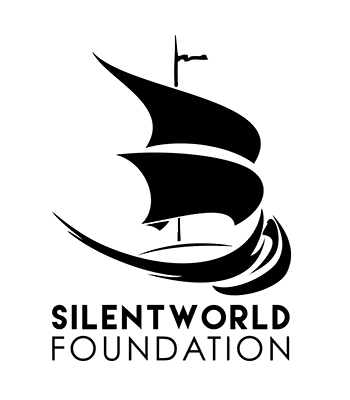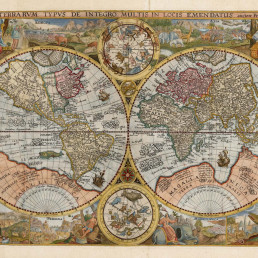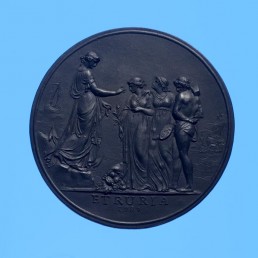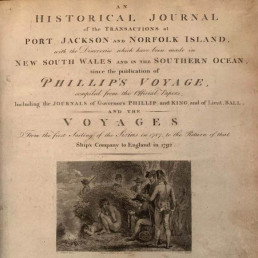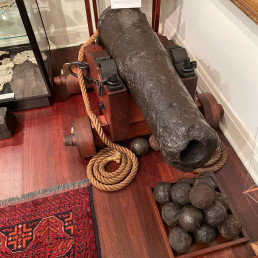
Name/TitleDocument bearing Fletcher Christian’s signature
About this objectFletcher Christian was the master’s mate on His Majesty’s Armed Vessel BOUNTY, which sailed on 23 December 1787 from England to the South Seas to transport breadfruit trees to the West Indies. Christian had sailed twice previously under the ship’s Commanding Lieutenant William Bligh, and the two men thought themselves friends when the voyage began. But after months of Bligh’s severe discipline, interrupted by an extended stay docked at idyllic Tahiti, Christian led the officers and crew in mutiny on 28 April 1789.
Bligh and 18 men loyal to his command were set adrift in a small boat, and Christian, knowing that his mutineers could never return to England, steered BOUNTY and her remaining crew to Tubuai in the French Polynesian Islands. Tubuai proved inhospitable, however, and the mutineers eventually split into two groups. The larger group of rebels returned to Tahiti where they settled until their idyll was fatally interrupted by the arrival of HMS Pandora sent by the Admiralty to capture the mutineers and return them to England to face trial.
Meanwhile, the other group of mutineers, consisting of Christian and eight others, sailed in a different direction, settling on Pitcairn Island.
There are very few known examples of Fletcher Christian’s signature.
MakerFletcher Christian - Signatory
Date Made1788
Period18th century
Place MadeBOUNTY (at sea)
Medium and MaterialsInk (iron gall ink) and paper
Measurements100mm x 110mm
Object TypeManuscripts and Ephemera
Object numberSF000165
Copyright Licence![]() Attribution - Non-commercial - No Derivatives (cc)
Attribution - Non-commercial - No Derivatives (cc)
Explore by category
Maps and Charts
Date range: 1541-1836
Ship Models
Date range: 1629-1890
Maritime Paintings
Date range: 1793-1849
Manuscripts and Ephemera
Date range: 1768-c1850
Medallions & Convict Tokens
Date range: 1619-1880
Landscapes
Date range: 1768-c1850
Books
Date range: 1694-c1850
Currency and Shares
Date range: 1624-1823
Printed Material
Date range: 1541-1836
Maritime Archaeology
Date range: 1629-1854
Curator's corner
New acquisitions, staff favourites and curios
The mug is decorated with an underglaze and a blue transfer print. On the body, it is titled ‘Emigrants to Australia’. This type of body and glaze was discontinued by 1840. Comparison of the handle shape and the profile of the foot, point to the attribution of manufacture by the Davenport Factory.
Delta was a ship-rigged vessel with two decks and three masts. It was built in Dordrecht, Netherlands in 1839 at the shipyard of Jan Schouten and registered in the same port. Its hull was constructed of oak and sheathed in ‘yellow metal’. Delta was owned by H. van der Sande at the time of its loss and was engaged as a cargo trader.
The Delta carried 29 crew and passengers, while sailing from Melbourne to Batavia in ballast when wrecked at Kenn Reefs on 30 May 1854 whilst under the command of Captain J.G. Kunst. This vessel loss supports the pattern of shipwrecks located on a well-travelled shipping route that was poorly charted until the mid-nineteenth century. The crew of the Delta could see four other shipwrecks at Kenn Reefs at the time of their vessel’s loss.
Important image of a ship associated with Matthew Flinders, that would shortly become one of the most famous early shipwrecks in eastern Australian waters. This is a fine ship’s portrait, by one of the great exponents of the art
